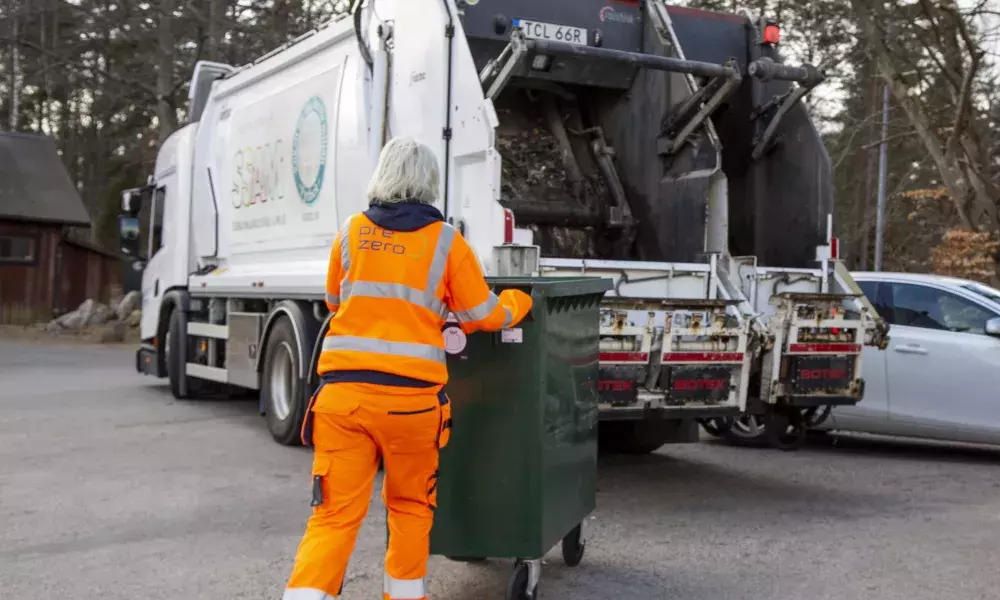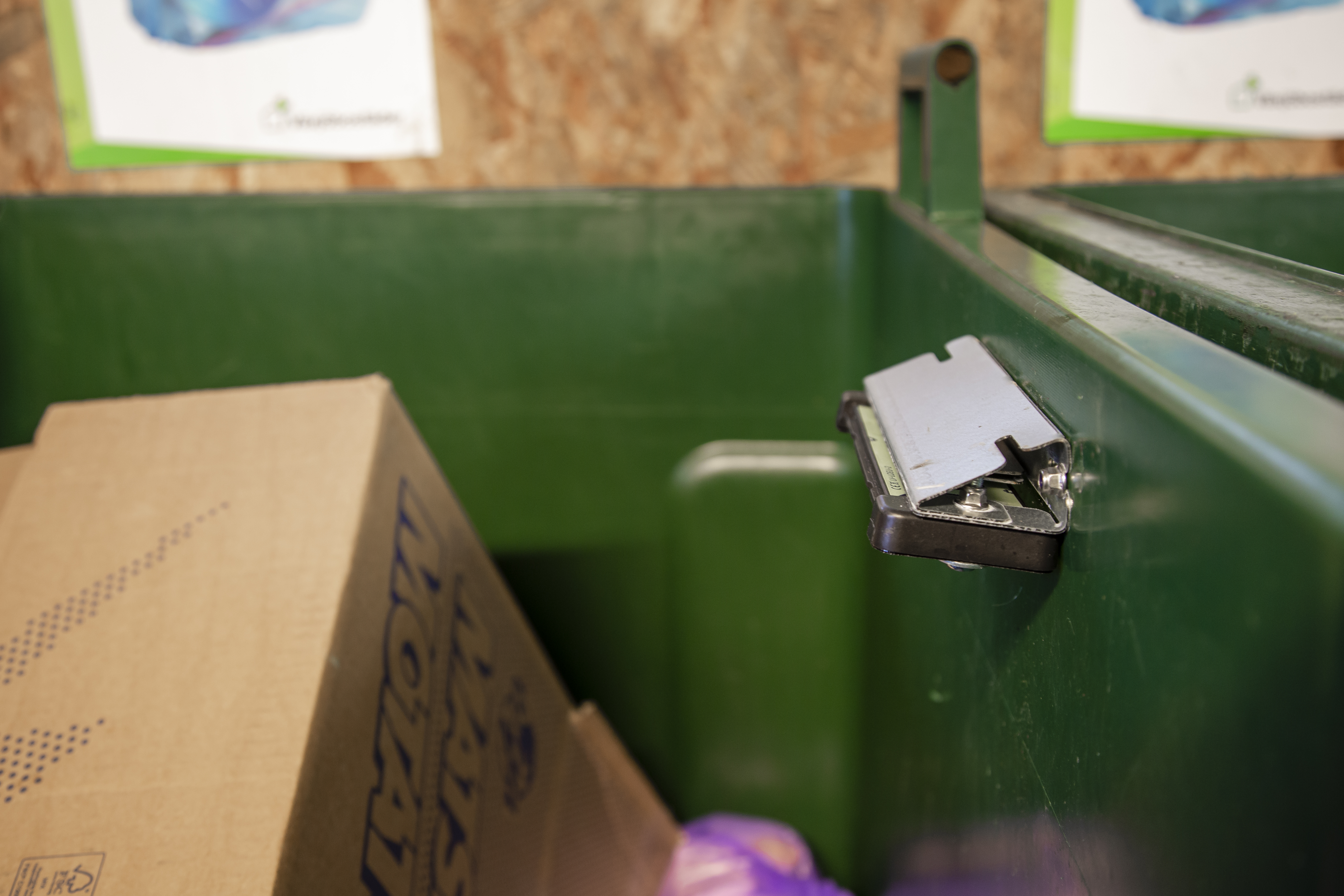Växjö gives waste bins a brain for better waste collection and sorting

Static collection is wasteful
Växjö’s waste collection company SSAM found out that many waste bins are far from full when the waste trucks arrive: a survey showed that about half of the bins could be emptied more efficiently, if taking the degree of filling into consideration. That would mean a departure from today's static driving schedules towards a demand-led approach. As part of the DIACCESS project, SSAM wanted to apply data driven pick-up “on-demand” of household waste generated in multifamily housing. After a bidding process, a company named Bintel AB (founded in 2019) was selected to develop the new solution in collaboration with SSAM. The procurement process was not a regular one: the Innovation Partnership model was used, in which the city does not buy a solution “of the shelf” from the market but teams up with a company to co-develop and test it first before entering into a normal business contract.
During the test period, Bintel attached sensors to 1400 waste bins for food and residual waste in apartment buildings to measure how full they are. In three of the recycling rooms, all bins were connected, not only food and residual waste, but also paper, plastic, metal, glass and newspaper. Bintel used its platform to process and analyse the data to create a more efficient collection based on demand and fill-rate predictions of the bins in relation to surrounding pickup locations. By March 2023, the testing phase ended, and the results have been satisfactory.
Sensor in the bin

Operational challenges
Per Gunnarsson, the project leader and Head of IT & digitalization at SSAM, declared: “we tested the new system with the sensors over a period of 3 months; this gave us a good view on when there are peak volumes of waste”. What also helped was that the testing could be implemented in a relatively large geographical area, with 1400 waste bins and a variety of apartment complexes. He added that “normally, pilots are much smaller, but this project allowed us to go into a bigger area, which gives much more realistic insights”. There were some operational challenges, however. The sensor measures how full each bin is, but often there are more bins in one recycling room. Jennie Orton, CEO at Bintel, said that: “the IT system connects all these data and ‘knows’ where each bin is, and its relation to other bins whereabouts. Therefore it is important that each bin is within its intended location and does not move into other locations. This initial challenge was overcome by communication with the janitors and real-estate owners to get them to understand and accept not to move the bins because that would create errors”.
The test results indicate that the new system has led to a 12% reduction in pickups; This is not yet translated in lower costs for the city but in the scaling stage these reductions are to be expected. But there are other advantages as well, as explained by Jennie Orton: “we now know much better which bins fill up the fastest and therefore it is quite easy to pinpoint the problem in the recycling rooms. We can see the waste situation almost in real time”. In the recycling rooms that were fitted with sensors on all bins, based on the data, they increased the space for paper and plastic and reduced the bins for metal, glass, and newspaper. The sorting increased and the residual waste decreased with 12 %, which saves the real estate company 20-30% in cost (as they are invoiced for residual waste) and lowers the cost for handling/burning the waste for SSAM. The result from these fully sensor fitted rooms can be translated into a CO2e, meaning that the 12% less residual waste is equal to a corresponding 10% decrease in kilometres in the total project. The results are highly relevant with regards to a CO2 reduction within waste handling.
Buy-in from the truck drivers
The municipal waste company has outsourced the actual waste collection to a private company, Prezero. Before the innovation, every day, Prezero’s drivers made their fixed rounds to pick up the waste from the buildings. This way of functioning would change with the new method. Per Gunnarsson from SSAM declares that: “changing the process has an impact on the drivers of the trucks. Rather than fixed routes, they now would work in more flexible ways. Therefore, we had to do good change management to make it work”. This asked for smart collaboration between three organisations: SSAM (the municipal waste company), the Prezero planning department, Bintel, and of course with the drivers working for Prezero.
Jennie Orton describes the buy-in from the truck drivers as a crucial success factor: “the drivers did not want to become a taxi driver, working for example 16 hours on Mondays, when all the bins are full after the weekend, and zero on Tuesdays”. There are other issues as well: “when you empty the bins when full, they are heavier, which impacts the drivers. Their routes will change, their work will be less predictable”. She continues: “we talked a lot with them to understand their worries and issues. This helped to make a planning system that they could work with”. In the end, Bintel and SSAM came up with a solution that fit within the drivers’ usual working hours, so their daily schedules would not be disrupted, whilst picking up the bins in a more efficient on demand driven way.
The driver’s knowledge and feedback about the situation in the recycling rooms on the ground in apartment buildings was very useful. During the testing phase, the drivers had a hotline to Bintel which they could call for support or information.
Contracting and upscaling
The test is now completed successfully, and the partners are entering into the contracting stage. Under the rules of innovation partnership procurement, the partners, Bintel and SSAM in this case, have 90 days to agree on a contract. According to Jennie Orton: “the business model will be based on operational lease of the platform which includes the access to the sensors. SSAM would pay us a monthly fee for our services; the data provided from SSAM about the bins etc will be owned by the SSAM. We at Bintel will only use the data to make the system smarter”. Moreover, there will be a scaling up: after the testing period, the demand-derived waste collection can be adopted in the whole city plus 5 smaller surrounding municipalities for which SSAM has the mandate to collect waste.
About this resource
The Urban Innovative Actions (UIA) is a European Union initiative that provided funding to urban areas across Europe to test new and unproven solutions to urban challenges. The initiative had a total ERDF budget of €372 million for 2014-2020.
Similar content




